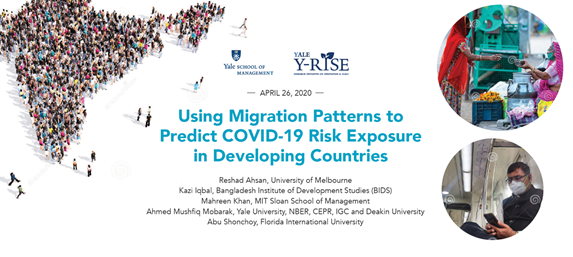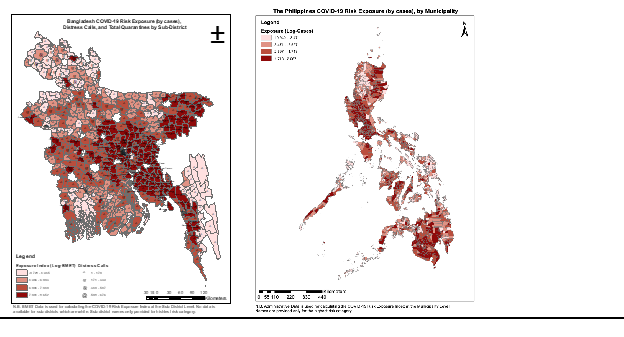Discover and read the best of Twitter Threads about #zoning
Most recents (13)
Do you know why your city looks the way it does?
From office buildings to single family homes, #zoning defines what is built and where, including #affordablehousing (or the lack of). But these laws can be difficult to understand. We have a solution. 1/9
evictionlab.org/zoning-restric…
From office buildings to single family homes, #zoning defines what is built and where, including #affordablehousing (or the lack of). But these laws can be difficult to understand. We have a solution. 1/9
evictionlab.org/zoning-restric…
Researchers Matt Mleczko and Matthew Desmond have created the National Zoning and Land Use Database, which allows us to understand how restrictive thousands of cities are in terms of what kind of housing they allow… 2/9
The database includes key measures to understand how zoning works, including, but not limited to, minimum lot sizes, number of units allowed, how much parking is required per unit, and how tall buildings can be. 3/9
In no particular order, here are my favorite #housing reads from 2022.
Across the political spectrum and in both articles and opinion pieces, the message is clear: The cause of the #HousingCrisis is the lack of housing and under-building since 2008… (1/14) #mnleg
Across the political spectrum and in both articles and opinion pieces, the message is clear: The cause of the #HousingCrisis is the lack of housing and under-building since 2008… (1/14) #mnleg
…caused by policies that price buyers and renters out of the market. Removing access and affordability roadblocks is necessary to achieve the level of construction needed to solve this problem.
And it takes all players. #housing #mnleg (2/14)
And it takes all players. #housing #mnleg (2/14)
Supply and demand is a simple concept, but Americans have a hard time applying this Econ 101 topic to #housing. Housing Shortage Denialism and NIMBYism must be overcome. via @TheAtlantic #mnleg (3/14) theatlantic.com/ideas/archive/… 

Daily Bookmarks to GAVNet 10/03/2021 greeneracresvaluenetwork.wordpress.com/2021/10/03/dai…
A Case Study in NIMBY Entitlement
modelcitizen.substack.com/p/a-case-study…
#entitlement #california #zoning #housing #racism #segregation
modelcitizen.substack.com/p/a-case-study…
#entitlement #california #zoning #housing #racism #segregation
The spirit of the age: Why the tech billionaires want to leave humanity behind
newstatesman.com/long-reads/202…
#wealth #TechnologyDevelopment #LifeExpectancy #SocialStructures
newstatesman.com/long-reads/202…
#wealth #TechnologyDevelopment #LifeExpectancy #SocialStructures
BUS PARADE! Celebrating the inaugural ride of new Route 85 with @ancpeoplemover! 🚏Downtown 🚌 🚏West Anc 🚌 🚏Loussac Library 🚌 🚏 Dimond Center Mall! #ANCgov 



Also, this is definitely the cleanest city bus system I've used! And the best name "People Mover"
Check out "The Roots of #Redlining," a new article @lwinling & I wrote that was just released in the @JournAmHist. Here's the link academic.oup.com/jah/article-ab… but an illustrated thread with summary & our major findings follows ... (1/17)
@UrbanHistoryA @SACRPH
@UrbanHistoryA @SACRPH
We trace the intellectual roots of #redlining to economist Richard T. Ely and his students & colleagues affiliated with the Institute for Research in Land Economics, which he founded in 1920 ... (2/17) 

MASSIVE NEW PAPER: Last year, we released our policy vision that rejected the false dichotomy of “pro-market” and “pro-government."
We've transformed this into a concrete agenda, our blueprint for the "free-market welfare state" THREAD 1/
niskanencenter.org/faster_fairer/…
We've transformed this into a concrete agenda, our blueprint for the "free-market welfare state" THREAD 1/
niskanencenter.org/faster_fairer/…
The focus of our efforts is not to provide a complete program to save America. In this agenda, we’re addressing the problem of restoring inclusive prosperity — revitalizing lagging economic dynamism while ensuring that the rewards of such dynamism are broadly shared. 2/
Even before #COVID19, America’s 21st-century malaise of dimming economic vitality and deepening social divisions demonstrated that something has gone wrong. Very wrong. Let’s do a little review. niskanencenter.org/what-the-pande…
You didn’t think you had school today, but class is now in session. We’re going to learn about the history of racist #housing policies in Seattle and how their history still affects communities today. /Thread
1/ Acknowledging our history, including the most ugly parts, keeps us accountable in moving forward towards achieving equity – from housing to education to jobs & beyond, we must recognize that governmental systems & laws still in place today were designed to codify prejudice.
2/ Today, neighborhoods from Wallingford to Queen Anne to the Central District are rooted in layers of systemic discrimination: from who can own land, what can be built, and whether & how it can be financed.
#COVID spreads through human-to-human transmission, so #migrants are an important vector. In the absence of adequate covid tests in LMICs, can we predict sub-national COVID spread, or identify likely hotspots using data on migration?
Short answer: Yes.
yrise.yale.edu/using-migratio…
Short answer: Yes.
yrise.yale.edu/using-migratio…

Data on airport returnees predict subsequent quarantines & #COVID19 distress calls across districts in #Bangladesh. Data on migration permits predict confirmed cases in #Philippines municipalities and Bangladeshi sub-districts. 

The #NavyHill #RVA downtown development plan includes hundreds of pages in two binders. Why so much paper? I took a look. #Thread 1/
The proposal from @LevarStoney 's office includes NINE proposed ordinances (city laws) and one resolution. The resolution is about any future surplus $$. It's non-binding - basically a political statement, not a law, so I will ignore for now. What's in the 9 ordinances? 2/
The first four ordinances (in my count - they're in no particular order) set up the mechanics of the deal - funding, land ownership, and specific actions for the city and developer. 3/
"Here's the ugly truth: if you wanted to make #housing construction as expensive and uncertain and unreliable as possible, you couldn't do a better job than the system #California has set up." 1/3 strongtowns.org/journal/2019/7…
3/3 & this is why incremental development is so hard "Infill building projects are huge, complex, and rare, because the procedural obstacles and the costs are astronomical. Only large-scale development can justify the uncertainty, delays, and risk of the planning process" #zoning
After four long years of legislative, legal and community engagement processes, we have arrived at a place where I believe it is time for us to say YES to more density, YES to more #affordable #housing and YES to more #neighbors in 27 additional neighborhoods throughout Seattle.
Contrary to the name of the “Select Committee on #CITYWIDE #MHA,” this legislation is not even close to citywide.
There are approx. 127 neighborhoods in Seattle. #MHA only relates to 27 of those 127 neighborhoods, impacting a total of only 6% of existing areas currently and strictly zoned as a single-family home zone.
On the first day of Christmas, rent seekers gave to me: R-1 #zoning. 1/12
On the second day of Christmas, rent seekers gave to me: 2 year environmental review 2/12
Sometimes it's the little things, the pilot projects & experiments that have the biggest city-building impact. In no particular order, here's a thread of #coollittlethings the City of #HamOnt did in 2017 ... and a shoutout to my staff who made them happen
1/ Special loading zones for musicians outside concert venues as part of our #MusicCity strategy #coollittlethings #hamont (thx to staff in Culture and Parking) 



2/ The "Mountain Climber" pilot project = free bus rides up the #NiagaraEscarpment for #cyclists #coollittlethings #hamont (thx to HSR and Transportation Planning staff) 








